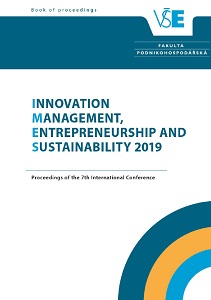Teleworking as a Modern Method of Work
Teleworking as a Modern Method of Work
Author(s): Pavel Sládek, Tomáš Sigmund
Subject(s): Social Sciences, Economy
Published by: Vysoká škola ekonomická v Praze
Keywords: Teleworking; homeworking; home office; mobile teleworking
Summary/Abstract: Purpose: The aim of this paper was to find out the attitude of students of economic fields towardsteleworking and their awareness of the related issues and to analyse the historical development oftheir opinions. Wider consequences were also drawn from the results.
Design/methodology/approach: We conducted a survey to achieve our purpose. A group ofrespondents was randomly selected and then the respondents were randomly selected out of thegroup. The respondents comprised 108 university students. We analysed the results by means ofthe descriptive statistics and the analysis of correlation.
Findings: Given the fact that the research has been carried out with university students, thenumbers of people aware of the concept of teleworking are relatively low. The implementation ofteleworking is also not very frequent. The data vary considerably according to age and level ofeducation of respondents. The results from the years 2002 and 2019 are similar. The entrepreneursshould offer their potential employees a combination of classical work and teleworking and theyshould be especially sensitive towards woman in maternity leave who would opt for teleworkingto stay in touch with their work.
Research/practical implications: Our results can help both those interested in this style of workand managers because students will be their potential employees. Students should be moreinformed about the options, benefits and drawbacks of teleworking at their universities. Employersshould be encouraged to offer this type of work to their employees.
Originality/value: There are only a few researches pursuing this type of issues. Usually theawareness of the concept, benefits and drawbacks of teleworking is considered for granted. Theresearch of the respondents’ attitude towards teleworking is also relatively rare. The benefit of thiswork is among other things its so-called longitudinal approach.
- Page Range: 834-846
- Page Count: 13
- Publication Year: 2019
- Language: English
- Content File-PDF

